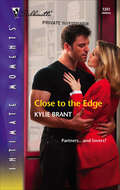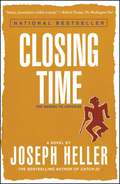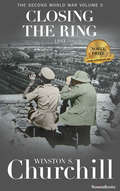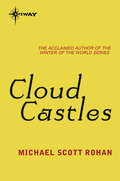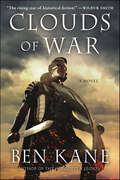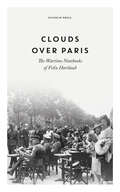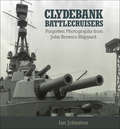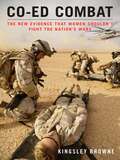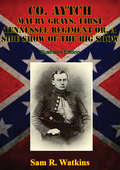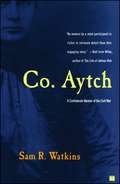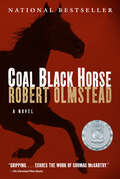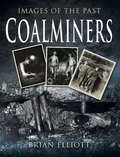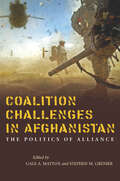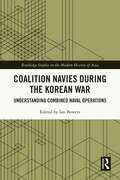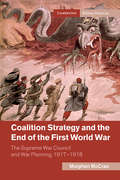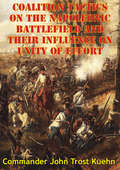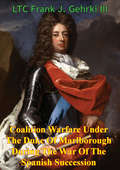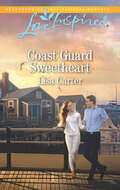- Table View
- List View
Close to Home: A heartbreaking saga of intrigue, tragedy and an impossible love
by Pamela EvansA terrible accident. A convicted murderer. An impossible love. A heart-breaking saga from much-loved author, Pam Evans, Close to Home is a gripping tale of intrigue and love, perfect for fans of Dilly Court and Rosie Goodwin. 'A compelling book' - Woman's RealmIn 1957, Ellie and Tom Hall are happily married. With a home of their own in Shepherd's Bush and a beautiful baby daughter, Ellie feels truly blessed and has faith in their future - a future which is cruelly snatched away when a terrible car accident leaves Tom brain-damaged and institutionalised. Months later, Ellie is slowly learning to live without him and focuses on her thriving knitwear business. Convicted for a murder he has always denied committing, when Ray Brent is released from prison he is ostracised by the community as he tries to rebuild his life. But he finds a loyal supporter in Ellie when she is witness to a vicious attack on him. Something about him makes her believe in his innocence and the two soon become friends. But it's only a matter of time before friendship becomes an impossible love...What readers are saying about Close to Home: 'Love it''Five stars'
Close to the Edge
by Kylie BrantSHE'D NEVER GIVEN HIMAN ASSIGNMENT HECOULDN'T HANDLEBayou-born Lucky Boucher knew Jacey Wheeler was out of his league. She was more than just a high-class blonde with the body of a goddess, she was the brains behind a successful P.I. firm—and Lucky's boss. So he kept his hands off her and his head on their private investigations. UNTIL NOW…For the first time since they had met, what she wanted from him had absolutely nothing to do with business. With their current case heating up and their professional relationship scorching, Lucky was more than willing to do whatever it took to keep the boss happy…
Close to the Edge: An Unbroken Heroes Novel (Unbroken Heroes Ser. #5)
by Dawn RyderThey are part of an elite unit. On task. Off grid. These are the men of the Shadow Ops task force. Be seduced and thrilled by Close to the Edge, the next Unbroken Heroes novel by Dawn Ryder.HOW FAR WILL ONE MAN GOJenna Henson always plays it safe. It’s what has gotten her through all these years . So she never expected to end up in arm-to-arm combat with a gorgeous, muscle bound mercenary named Dare…Agent Dare Servant lives for the thrill of the chase, the adrenaline high. He’s fully committed to his job, fully armed, and full-on dangerous. But when innocent, irresistible Jenna Henson walks in on his latest mission, the need to keep her safe becomes all-consuming.TO PROTECT THE WOMAN HE CAN’T LIVE WITHOUT?Jenna’s captured the attention of Dare’s deadliest enemies, and with a target on her back, she needs Dare’s protection. But being Jenna’s bodyguard might be his hardest challenge yet. How can he keep her safe when he longs to take her in his arms and never let her go?
Closing Arguments
by Frederick BuschClosing Arguments is the story of a shocking murder trial, a disintegrating marriage, an obsessive love affair. In the tradition of Robert Stone and Russell Banks, Frederick Busch weaves a tale of lies, duplicity, fatal attractions, and shattering revelations that uncover new and dizzying depths to the very last page. Not a day goes by but Mark Brennan remembers Vietnam. In some ways he seems a textbook case of post-traumatic combat stress. Brennan carries this burden with him into his upstate New York law practice, his relations with his children, and his tense marriage. But when he is asked, pro bono, to defend a young woman accused of murdering her lover in bed, Mark's sense of impending recognition starts to close in. As he becomes obsessively involved with the thrillingly dangerous Estella, Mark pilots his life to its outermost limits. Closing Arguments is a disturbing novel about deception, betrayal, violence, and the imagination of violence. With a sure, commanding touch, Frederick Busch reveals beneath the placid exterior of small town America a world of fear, rage, agony, and love come desperately unmoored. The sheer power of Closing Arguments will sweep you from its opening page to its agonizing but inevitable climax.
Closing Pandora's Box: Arms Races, Arms Control, and the History of the Cold War
by Patrick GlynnThis history of arms control in the 20th century challenges the liberal-pacifist view of international relations, and explains the Cold War from a post-Cold War perspective, untangling the complex realities of 20th-century diplomacy, and analyzing the major crises and wars. It re-evaluates the successes and failures of democratic statesmen in the light of the Cold War's ultimate outcome.
Closing Time: The Sequel to Catch-22
by Joseph HellerA darkly comic and ambitious sequel to the American classic Catch-22.Joseph Heller revisits the unforgettable characters of Catch-22, now facing the twilight of their lives and the end of the century. The generation that fought in World War II—Yossarian, Milo Minderbinder, the chaplain, along with newcomers little Sammy Singer and giant Lew—are bound together in uneasy peace and old age, fighting not the Germans this time, but the inevitability of The End. Closing Time deftly satirizes the realities and the myths of postwar America with the same ferocious humor as his masterpiece, Catch-22, exploring the absurdity of our politics, the decline of our society and great cities, and the greed and hypocrisy at the heart of our business and culture. Outrageously funny yet deadly serious, and as brilliant as Catch-22 itself, Closing Time is a fun-house mirror reflecting, at once grotesquely and accurately, who we truly are.
Closing the Door on Globalization: Internationalism, Nationalism, Culture and Science in the Nineteenth and Twentieth Centuries (Routledge Studies in the History of Science, Technology and Medicine)
by Cláudia NinhosThis is a book about the tensions and entangled interactions between internationalism and nationalism, and about the effects both had on European scientific and cultural settings from the mid-nineteenth to the mid-twentieth century. From chemistry to philology the essays tackle different historical case studies exploring how the paths taken by science and culture during the period were affected by nationalism and internationalism.
Closing the Ring (Winston S. Churchill The Second World Wa #5)
by Winston S. ChurchillThe Allies take the fight to the enemy in this vivid historical account by the British prime minister and recipient of the Nobel Prize in Literature. In this fifth volume of his magnificent history of World War II, Winston Churchill recounts the story of the Allied forces going on the offensive. Mussolini falls, Hitler is besieged on three sides, and the Japanese find it near impossible to maintain a grip on the territories they had recently overtaken. Stalin, Churchill, and Roosevelt work toward keeping their uneasy partnership moving in concert, and much of this volume is dedicated to describing the intricate negotiations that went on to sustain this partnership toward one single goal. This six-volume account of the struggle between the Allied Powers in Europe against Germany and the Axis during World War II, told from the unique viewpoint of a British prime minister, it is also the story of one nation&’s heroic role in the fight against tyranny, enriched with fascinating primary sources. We are presented with not only Churchill&’s retrospective analysis of the war, but also memos, letters, orders, speeches, and telegrams, day-by-day accounts of reactions as the drama intensifies. Throughout these volumes, we listen as strategies and counterstrategies unfold in response to Hitler&’s conquest of Europe, planned invasion of England, and assault on Russia, in a mesmerizing account of the crucial decisions made as the fate of the world hangs in the balance.
Cloud Castles
by Michael Scott RohanThe Spiral: where past and present meet, where myth and legend infiltrate the mundane world, where Hy Brasil and Babylon are but a short voyage away - via the cloud archipelagos...You can't always find it - but it can always find you.And when it finds Steve Fisher again, he is plucked from his lonely life into the heart of a breathtaking adventure. An apocalyptic struggle that has raged for millennia must be resolved - or Fisher may see the dawn of a new Dark Age.
Clouds of War: A Novel (Hannibal #3)
by Ben KaneTwo friends on opposing sides of war confront each other during the brutal siege of Syracuse in this gripping military historical novel.“The rising star of historical fiction!” —Wilbur SmithIn 213 B.C., as the forces of both Rome and Hannibal’s army from Carthage are still reeling from the losses at the Battle of Canae, the second Punic War rages on. With more and more of Rome’s Italian allies switching allegiance to Carthage, the stakes continue to increase. When the major Sicilian city of Syracuse defects to Hannibal, Rome sends all that it has to retake the city. Now, outside the nearly impregnable city walls, a vast Roman Army besieges the city. Inside the city, tensions and politics are an even greater threat.Two men—once boyhood friends, through circumstance now find themselves fighting on opposing sides—are about to face each other once again. Caught between them is a woman. All three trapped in one of the most famous and brutal sieges of all time.Ben Kane’s Clouds of War is a vivid, exciting, and very human novel about one of the most defining conflicts in history, seen from the very top, where the generals make bold gambits, all the way down to the very bottom, where the people who are caught in the crossfire are trapped.Praise for Clouds of War“Kane is already well-known as a writer who delivers on immersing the reader in his world, and this book does not disappoint. . . . Existing Kane fans won’t be disappointed, and this book deserves to increase that following.” —Historical Novel Society
Clouds over Paris: The Wartime Notebooks of Felix Hartlaub
by Felix HartlaubA unique testament to the persistence of ordinary life through the disaster of modern war, perfect for fans of books like Suite FrançaiseSharply immediate, evocative diaries from the heart of Occupied Paris in World War II by a classic German writer, in English for the first timeThe writer Felix Hartlaub died in obscurity at just 31, vanishing from Berlin in 1945. He left behind a small oeuvre of private writings from the Second World War: fragments and observations of life from the midst of catastrophe that, with their evocative power and precision, would make a permanent place for him in German letters.Posted to Paris in 1940 to conduct archival research, Hartlaub recorded his impressions of the unfamiliar city in notebooks that document with unparalleled immediacy the daily realities of occupation.With a painter's eye for detail, Hartlaub writes of the bustle of civilians and soldiers in cafés, of half-seen trysts during blackout hours and the sublime light of Paris in spring.
Clovis Blade Technology: A Comparative Study of the Keven Davis Cache, Texas
by Michael B. CollinsAround 11,000 years ago, a Paleoindian culture known to us as "Clovis" occupied much of North America. Considered to be among the continent's earliest human inhabitants, the Clovis peoples were probably nomadic hunters and gatherers whose remaining traces include camp sites and caches of goods stored for utilitarian or ritual purposes. This book offers the first comprehensive study of a little-known aspect of Clovis culture-stone blade technology. Michael Collins introduces the topic with a close look at the nature of blades and the techniques of their manufacture, followed by a discussion of the full spectrum of Clovis lithic technology and how blade production relates to the production of other stone tools. He then provides a full report of the discovery and examination of fourteen blades found in 1988 in the Keven Davis Cache in Navarro County, Texas. Collins also presents a comparative study of known and presumed Clovis blades from many sites, discusses the Clovis peoples' caching practices, and considers what lithic technology and caching behavior can add to our knowledge of Clovis lifeways. These findings will be important reading for both specialists and amateurs who are piecing together the puzzle of the peopling of the Americas, since the manufacture of blades is a trait that Clovis peoples shared with the Upper Paleolithic peoples in Europe and northern Asia.
Clydebank Battlecruisers: Forgotten Photographs from John Brown's Shipyard
by Ian JohnstonBetween 1906 and 1920 the Clydebank shipyard of John Brown & Sons built five battlecruisers, each one bigger than the last, culminating in the mighty Hood, the largest warship of her day. If Tiger is regarded as a modification of the Lion class design, this represents every step in the evolution of these charismatic, and controversial, ships. Like most shipyards of the time, Clydebank employed professional photographers to record the whole process of construction, using large-plate cameras that produced pictures of stunning clarity and detail; but unlike most shipyard photography, Clydebanks collection has survived, although very few of the images have ever been published. For this book some two hundred of the most telling of these were carefully selected, and scanned to the highest standards, depicting in unprecedented detail every aspect of the building and fitting out of Inflexible, Australia, Tiger, Repulse and Hood.Probably more has been written about battlecruisers than any other warship type, and as modelmaking subjects they have a devoted following, so any new book has to make a real contribution. This pictorial collection, with its lengthy and informative captions, and an authoritative introduction by Ian Johnston, offers ship modellers and enthusiasts a wealth of visual information simply unobtainable elsewhere.
Co-ed Combat
by Kingsley BrowneA scholar makes a definitive, controversial argument against women in combat More than 155,000 female troops have been deployed to Iraq and Afghanistan since 2002. And more than seventy of those women have died. While that's a small fraction of all American casualties, those deaths exceed the number of military women who died in Korea, Vietnam, and the Gulf War combined. Clearly, women in combat isn't a theoretical issue anymore. Women now fly combat aircraft and serve on warships. Even the remaining all-male corners of the military are blurring the lines in Iraq. And for many advocates, this trend is considered progress--toward a better, "gender neutral" military. Co-ed Combat makes the opposite case, based on research in anthropology, biology, history, psychology, sociology, and law, as well as military memoirs. It asks hard questions that challenge the assumptions of feminists.For instance: Has warfare really changed so much as to reverse the almost unanimous history of all-male armed forces? Are men and women really equivalent in combat skills, even leaving aside physical strength? Do female troops respond to traditional types of motivations? Can the bonds of unit cohesion form in a co-ed military unit? Can an all-volunteer military afford to reject women? This is a controversial book, likely to draw a passionate response from both conservatives and liberals.
Co. Aytch Maury Grays, First Tennessee Regiment Or, A Side Show Of The Big Show [Illustrated Edition]
by Sam R. WatkinsIncludes Civil War Map and Illustrations Pack - 224 battle plans, campaign maps and detailed analyses of actions spanning the entire period of hostilities."A classic account of Civil War combat. This is a justifiably famous account of the Civil War told by an ordinary soldier from within the ranks of a Tennessee regiment within the Confederate Army. Often quoted, it tells in a direct way, the story of an infantry company at war. In this it has much in common with similar accounts of men living and fighting together in combat irrespective of nationality, age or conflict. This is an intimate portrait of war with all its comradeship, hardship, fear, horror and humour. We accompany Watkins and his comrades of Company 'Aytch' on campaign as he recollects, in his easy and personable style, encounters at Shiloh, Corinth, Murfreesboro, Chattanooga, Chickamauga, Missionary Ridge and other bloody battlefields where they fought and died for the Confederate cause until the eventual surrender of the Southern forces. Highly recommended."-Print ed.
Co. Aytch: A Confederate Memoir of the Civil War
by Sam R. WatkinsThis classic book takes readers to the front lines via vivid descriptions of one company's foot soldiers and commanders, its Yankee enemies, and its victories and defeats--from Shiloh to Nashville.
Co. Aytch: A Confederate Memoir of the Civil War
by Sam R. WatkinsEarly in May 1861, twenty-one-year-old Sam R. Watkins of Columbia, Tennessee, joined the First Tennessee Regiment, Company H, to fight for the Confederacy. Of the 120 original recruits in his company, Watkins was one of only seven to survive every one of its battles, from Shiloh to Nashville. Twenty years later, with a "house full of young 'rebels' clustering around my knees and bumping about my elbows," he wrote this remarkable account of "Co. Aytch" -- its common foot soldiers, its commanders, its Yankee enemies, its victories and defeats, and its ultimate surrender on April 26, 1865. Co. Aytch is the work of a natural storyteller who balances the horror of war with an irrepressible sense of humor and a sharp eye for the lighter side of battle. Among Civil War memoirs, it is considered a classic -- a living testament to one man's enduring humanity, courage, and wisdom in the midst of death and destruction.
Coal Black Horse (Historical Fiction Ser.)
by Robert OlmsteadWhen Robey Childs's mother has a premonition about her husband, a soldier fighting in the Civil War, she does the unthinkable: she sends her only child to find his father on the battlefield and bring him home. At fourteen, wearing the coat his mother sewed to ensure his safety—blue on one side, gray on the other— Robey thinks he's off on a great adventure. But not far from home, his horse falters and he realizes the enormity of his task. It takes the gift of a powerful and noble coal black horse to show him how to undertake the most important journey of his life: with boldness, bravery, and self-posession.Coal Black Horse joins the pantheon of great war novels—All Quiet on the Western Front, The Red Badge of Courage, The Naked and the Dead.
Coal Miners (Images of the Past)
by Brian ElliottThere have been many books published about the coal mining industry of Britain but relatively few about the miners themselves. This book is unique in that it concentrates on the miner, his family and his work through a careful selection of illustrations. Although most of the images are photographic, and therefore relate to the latter part of the nineteenth to the closing years of twentieth century, use is also made of much earlier sources, from woodcuts and engravings to illustrations in contemporary journals and magazines. A good deal of the material has come from the author's own collection, accumulated over many years of research; and also from archive sources. The selection is wide ranging, covering the traditional coal mining regions of Britain, from Scotland and northern England, through the midland coalfields and to Wales, as well as images from smaller coalfields such as Cumbria and Somerset. Today, coal mining is a virtually a lost industry and the men, women and children involved in what was once Britain's most important economic but most dangerous activity deserve both recognition and celebration.
Coalition Challenges in Afghanistan: The Politics of Alliance
by Gale A. Mattox Stephen M. GrenierThis book examines the experiences of a range of countries in the conflict in Afghanistan, with particular focus on the demands of operating within a diverse coalition of states. After laying out the challenges of the Afghan conflict in terms of objectives, strategy, and mission, case studies of 15 coalition members--each written by a country expert--discuss each country's motivation for joining the coalition and explore the impact of more than 10 years of combat on each country's military, domestic government, and populace. The book dissects the changes in the coalition over the decade, driven by both external factors--such as the Bonn Conferences of 2001 and 2011, the contiguous Iraq War, and politics and economics at home--and internal factors such as command structures, interoperability, emerging technologies, the surge, the introduction of counterinsurgency doctrine, Green on Blue attacks, escalating civilian casualties, and the impact of the Provincial Reconstruction Teams and NGOs. In their conclusion, the editors review the commonality and uniqueness evident in the country cases, lay out the lessons learned by NATO, and assess the potential for their application in future alliance warfare in the new global order.
Coalition Navies during the Korean War: Understanding Combined Naval Operations (Routledge Studies in the Modern History of Asia)
by Ian BowersThis book presents a detailed assessment of the role of navies in the Korean War. It highlights that, despite being predominantly a land war, navies played a vital part. Moreover, the naval war was not solely a U.S. operation. Smaller navies from many countries made important contributions both in supporting the United States and carrying out independent and combined naval operations. This subject holds special importance since current Western strategic thinking and capabilities emphasise the necessity of combined naval operations involving multiple navies in any potential future naval conflict. The example set by the Korean War therefore offers valuable insights into the operational and strategic problems, and benefits and opportunities of contemporary and future combined coalition naval operations.
Coalition Strategy and the End of the First World War: The Supreme War Council and War Planning, 1917–1918 (Cambridge Military Histories)
by Meighen McCraeWhen the Germans requested an armistice in October 1918, it was a shock to the Allied political and military leadership. They had been expecting, and planning for, the war to continue into 1919, the year they hoped to achieve a complete military victory over the Central Powers. Meighen McCrae illuminates how, throughout this planning process, the Supreme War Council evolved to become the predominant mechanism for coalition war-making. She analyses the Council's role in the formulation of an Allied strategy for 1918–1919 across the various theatres of war and compares the perspectives of the British, French, Americans and Italians. In doing so we learn how, in an early example of modern alliance warfare, the Supreme War Council had to coordinate national needs with coalition ones.
Coalition Tactics On The Napoleonic Battlefield And Their Influence On Unity Of Effort
by Commander John Trost KuehnThe mechanism for the operation of our military forces beyond the shores of the U.S. is the modern coalition from the grand alliance of NATO to simple bilateral relationships. Understanding the dynamics of coalition warfare is important for a U.S. Military that often finds itself operating as the dominant member of any coalition it joins. One of the major considerations listed in the portion of joint doctrine which addresses multinational coalitions is the concept of unity of effort Current U.S. Army doctrine has long recognized the importance of unity of command. However, the latest drafts of the new Army keystone doctrine publication, FM 100-5, have upgraded the principle of unity of command to unity of effort. The efficacy of this change recognizes the realities of operations in a world of coalitions, trans-governmental agencies, and private organizations all which find themselves often in league with our military as we strive to reach common (not always strictly military) objectives.This monograph will examine two historical case studies from the Napoleonic Wars (1792-1815) in order to explore the relationship between tactical and doctrinal differences between different members of the same coalition. The first case study examines the coalition army of Marshal Suvorov at the battles of the Trebbia and Novi in 1799. The second example will move forward in time to the Russo-Prussian army of the spring of 1813 and its performance at the battles of Lützen and Bautzen.Although history does not provide us with exact recipes for implementing complex solutions in a complex world, it does provide a means to understand the dynamics of human behavior on a vast scale. The Napoleonic period represents a veritable laboratory of coalition warfare and provides a means of applying the lessons of a historical period to understanding the dynamics of coalitions.
Coalition Warfare Under The Duke Of Marlborough During The War Of The Spanish Succession
by Ltc Frank J. Gehrki IIICoalition warfare is an important area of military study for today. During the War of the Spanish Succession, the Duke of Marlborough successfully led a coalition of over twenty nations and states against the armies of Louis XIV of France. During the war, he waged ten campaigns applying military brilliance to defeat French military pre-eminence on the continent. His victories propelled England to a position of power in Europe. He achieved his many successes despite being crippled by the myriad problems incumbent in coalition warfare. This study examines Marlborough's prosecution of the War of the Spanish Succession, focusing on the aspects of coalition warfare. It examines how the Duke of Marlborough dealt with the challenges presented by his coalition partners. It concludes with potential lessons for those who might wage coalition warfare today.
Coast Guard Sweetheart: An Amish Match Claiming The Single Mom's Heart Coast Guard Sweetheart
by Lisa CarterShe might get a second chance at love with a sailor who will help her through the storms. From the award-winning author of Coast Guard Courtship.When coast guard officer Sawyer Kole is stationed again in Kiptohanock, Virginia, he’s ready to prove to Honey Duer that he’s a changed man—and the right man for her. But it’s not smooth sailing when a hurricane blows their way.To save the family inn she’s restored to perfection, Honey will ride out the storm. But can she handle the turbulence of seeing Sawyer again? Years ago he walked away, taking her dreams of love. Now as Hurricane Zelda barrels down, Honey may have no choice but to trust Sawyer to save her life and—just maybe—her heart.

